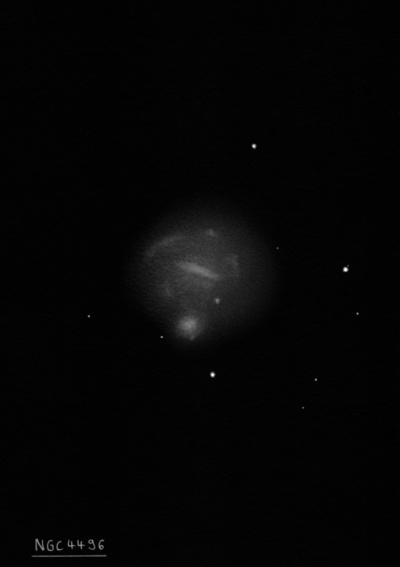
William Herschel discovered NGC 4496 = H II-36 = h1309 on 23 Feb 1784 (sweep 158) and recorded "a faintish pL nebula. It seems to be resolveable." John Herschel made three observations and resolved this double system on the 7 Apr 1828: "A double nebula; vF; pL; both R; pos 45° sf by diag; the two are in contact; unequal." The three editions of the Reference Catalouge of Bright Galaxies label the two components as NGC 4496A and 4496B.
R.J. Mitchell sketched and described this system on 18 Apr 1855 at Birr Castle, "A double neb, alpha [NGC 4496B] is vF, and its light flickering, the other [NGC 4496A] has F neby extending a good way downwards [north], and is much the larger and brighter of the two." Neither JH in the GC or Dreyer in the NGC assigned two designations for the components, although the NGC description reads "bi-nuclear or double nebula".
400/500mm - 17.5" (2/28/87): NGC 4496A is moderately bright, large, elongated WSW-ENE, low even surface brightness. Forms a double system with NGC 4496B = PGC 41473 superimposed at the SSE end. The companion is fairly faint, very small, round, diffuse.
Notes by Steve Gottlieb